It was low tide; the mudflats were fully exposed, revealing high intertidal biodiversity. I scanned the area with my binoculars and noticed a group of shorebirds moving around the mudflat, pecking and probing the invertebrates in the mud. Their agile movements and foraging patterns were mesmerizing. Suddenly, a large shadow swept over the mudflats, and shorebirds began simultaneously darting in the air. When I looked up, a Peregrine Falcon was flying high, scanning the shoreline for its possible next meal. The shorebirds formed a single flock, and were tightly connected to each other. Their twinned movements and the whole formation were truly acting as one body. This flight not only defied the basic principles of gravity, but also successfully evaded the predator’s attempts to singularly target any bird. They moved as one without a single sound, avoiding the peregrine’s strike and essentially persuading the peregrine to leave. This was less than a momentary occurrence, but it felt like an eternity. I was very impressed by the adaptability and tenacity of these small birds, who were executing a master of survival flight every day.
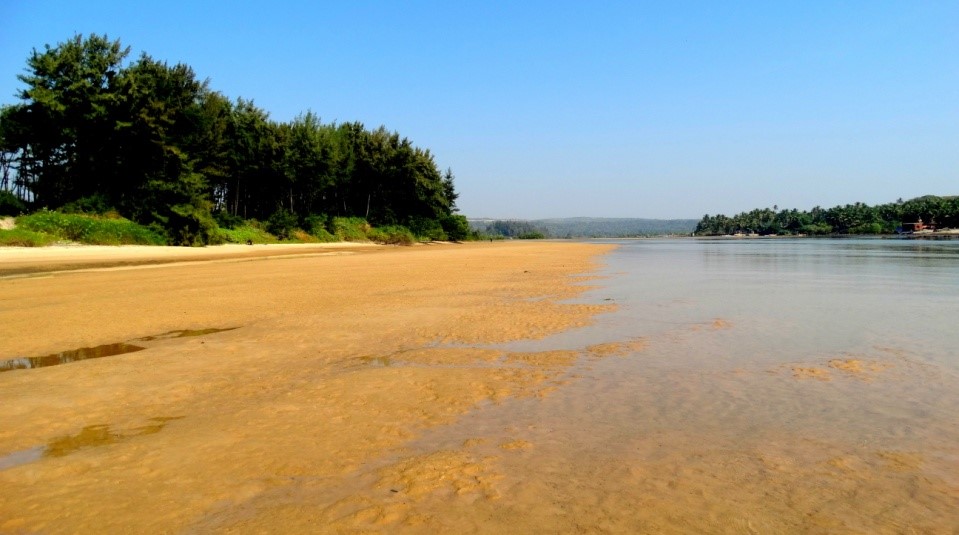 Exposed sandy mudflats during low tide
Exposed sandy mudflats during low tide
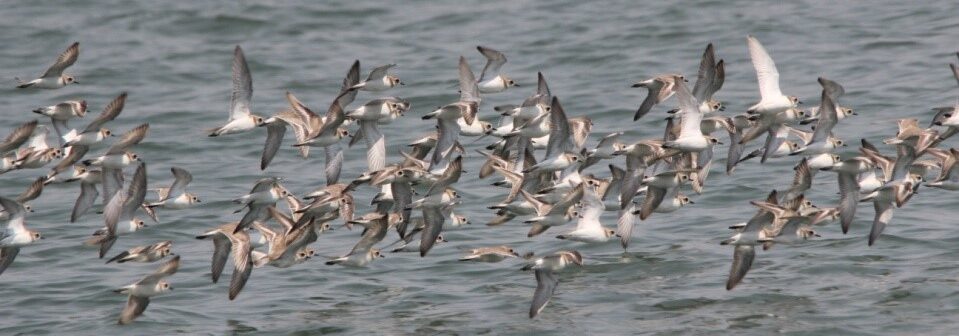 Synchronized flight of Plovers to avoid predator attacks
Synchronized flight of Plovers to avoid predator attacks
This is how my love for birds and nature took shape…
I grew up in a place lucky enough to explore the fields around my home. I used to spend several hours listening to the calls of the birds and observing their activities, although I was not an avid bird watcher at the time. However, these early experiences instilled in me a passion for birds and nature. My real journey into bird watching began during my master’s (wildlife biology) in 2010 at A.V.C. College (Autonomous), Mayiladuthurai, Tamil Nadu. There I had the opportunity to meet Dr.R.Nagarajan (principal and head of the Wildlife Biology Department), a renowned shorebird behavioural ecologist. He was the first person who caught my attention and sparked my interest in birds and nature. On the very first day of class, Dr. R. Nagarajan asked me how many birds I could identify and describe their identification characters. This question provoked me to develop my bird identification skills. Also, this was a metamorphic moment that set the stage for my future work. I, along with other friends in the class, formed a bird-watching team and started exploring the wetlands and fields surrounding our campus. These bird-watching trips were greatly helpful and provided an opportunity to observe different species. I made a note of how many new species were observed each day.
Dr.R.Nagarajan was the real inspiration who drew my attention to the fascinating world of birds. His insightful lectures in the classroom and well-organized field trips provided an excellent opportunity to gain a thorough understanding of birds and their environment. Fortunately, Dr. R. Nagarajan was my dissertation supervisor. For my master’s thesis, I studied the behaviour and feeding habits of Grizzled Giant Squirrels in the Srivilliputhur Forest Division, Tamil Nadu. My master’s thesis investigated the activity pattern and food habits of the Grizzled Giant Squirrel (Ratufa macroura) in Srivilliputhur Grizzled Giant Squirrel Wildlife Sanctuary. In addition, the thesis sought to understand the potential drives for squirrel invasion into man-made habitats. In order to record the behaviour of squirrels, I had to observe the individuals from dawn to dusk. It was a difficult task, but it refined my sample procedures. This hands-on experience was crucial, and provided a good foundation for ecological study.
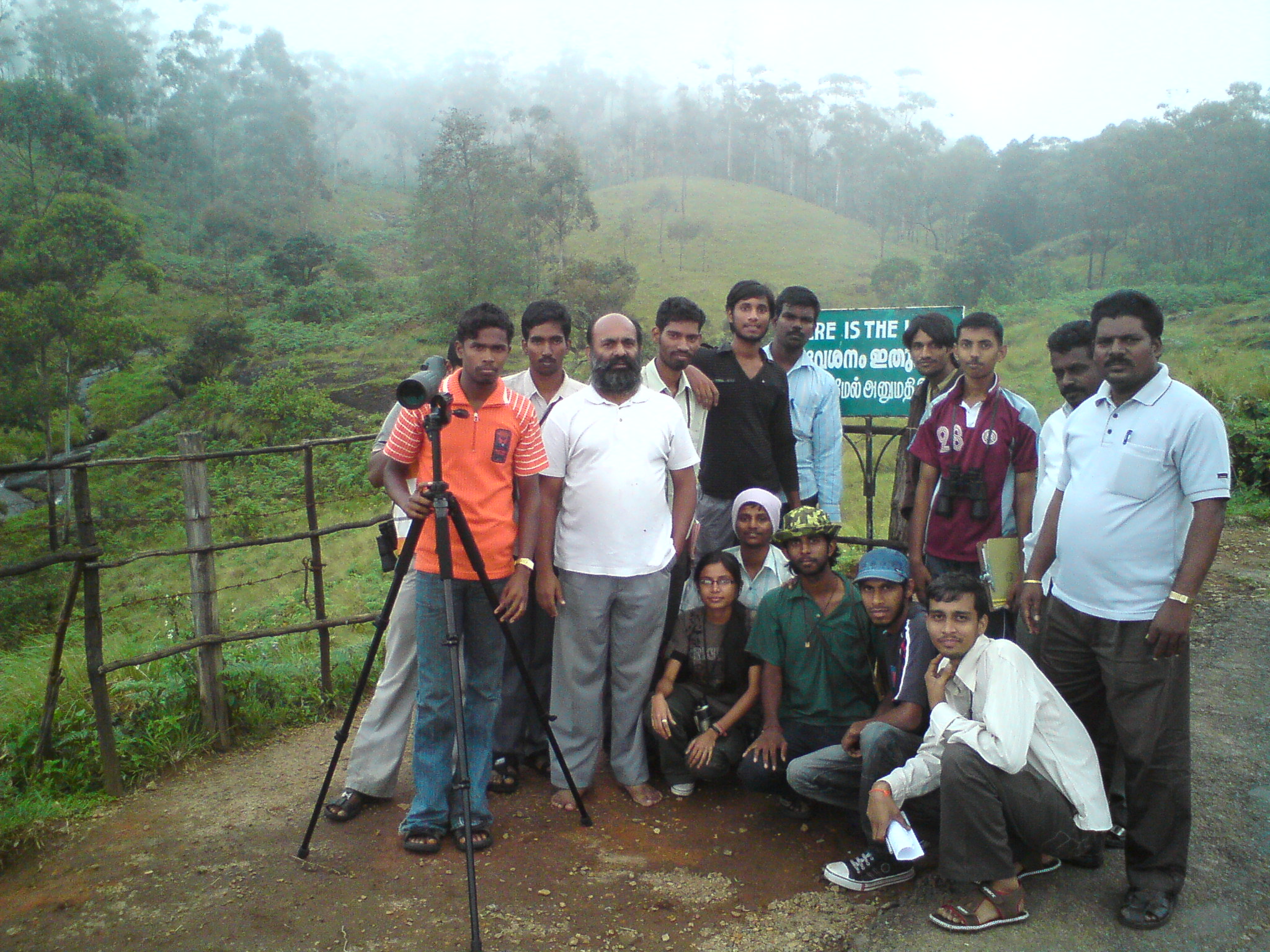 This photo was captured during my exposure visit to Eravikulam National Park with Dr.R.Nagarajan and Dr. M. Baskaran
This photo was captured during my exposure visit to Eravikulam National Park with Dr.R.Nagarajan and Dr. M. Baskaran
After completing my master’s, I had the opportunity to work with careearthtrust.org, an NGO based in Chennai, where I was involved in various wetland research projects. One of the most significant projects was the preparation of a conservation management plan for the Pallikaranai Marshland. A most threatened urban wetland in Chennai. Many rare and threatened species use this wetland; however, it has no legal protection status and is often considered a wasteland. Our continued efforts led to its recognition as an important bird area (Ramsar Site) in India.
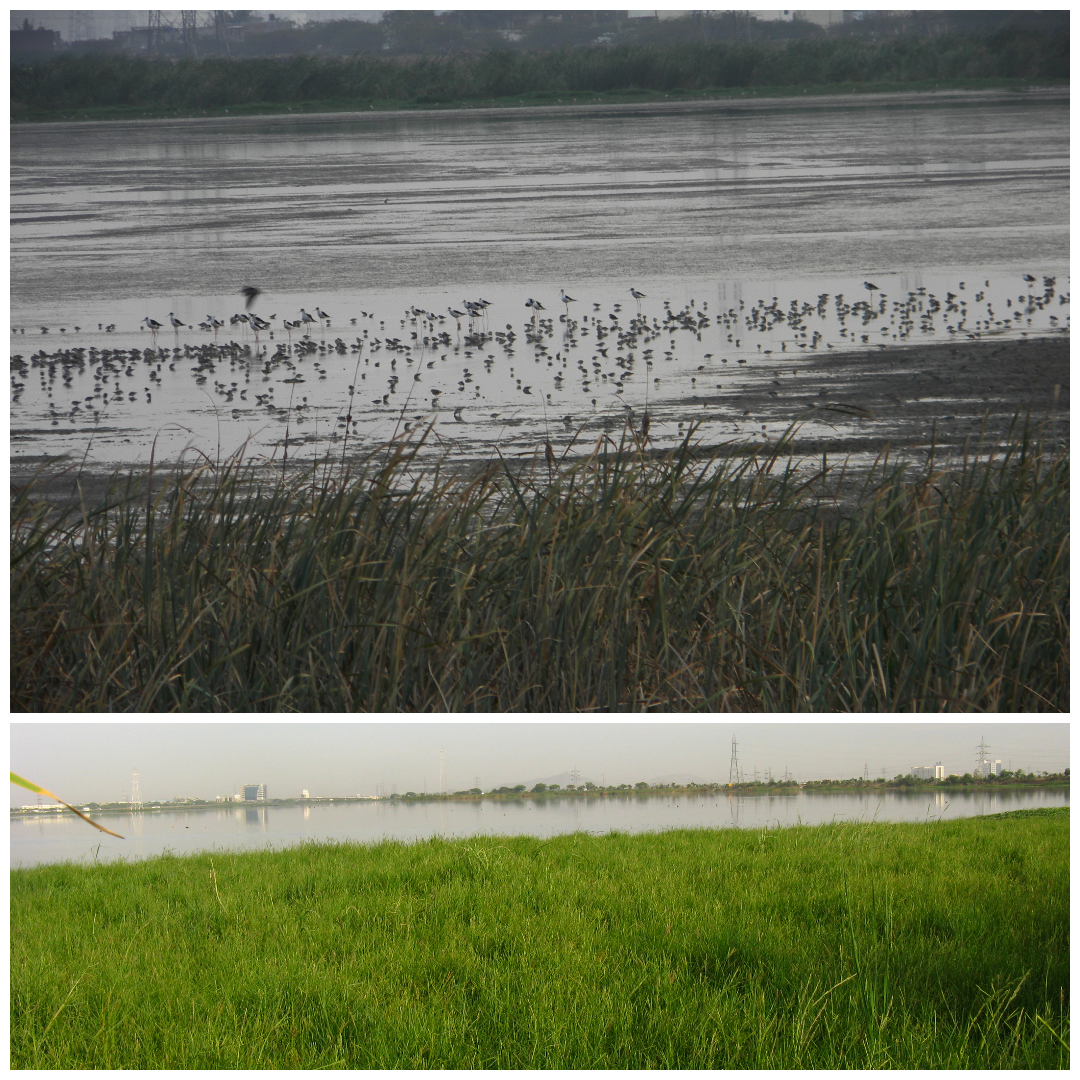 Pallikaranai Marshland an urban wetland in Chennai, crucial habitat for many resident and migratory birds.
Pallikaranai Marshland an urban wetland in Chennai, crucial habitat for many resident and migratory birds.
With a growing interest in delving deeper into shorebird research, I completed my PhD at the Salim Ali Centre for Ornithology and Natural History (Sacon), Coimbatore. The seemingly similar, dusky brown creatures such as shorebirds, grabbed my attention as I studied for doctoral research. This amazing species makes cyclic movements from their arctic breeding grounds to non-breeding wintering sites like India. During their migration, they depend on several coastal intertidal mudflats to replenish energy reserves for the next stage of migration. By having this large distribution range, shorebirds act as key indicators of the wetland ecosystem. In recent years, their numbers have drastically declined due to various disturbances such as habitat degradation, hunting and climate change. However, little is understood about this magnificent migratory species in India. Therefore, I decided to study these amazing flyers from unprotected coastal wetlands in the Sindhudurg district, Maharashtra, along the west coast. Dr. Santhanakrishnan Babu, Senior Scientist at SACON, was my mentor and supported me in every possible way to enhance my understanding of shorebirds. My PhD work investigated the assemblage of shorebirds in various habitats and identified five migratory phases in shorebirds for the first time (Spatial and Temporal Patterns of Shorebird Assemblages in Select Estuaries along the India’s West Coast). I also explored the influence of abiotic and biotic factors on shorebird abundance and distribution, as well as the microhabitat selection of Curlews, shanks, and plovers (Environmental factors and prey availability determine wintering habitat use by shorebirds along the west coast of India). These aspects were previously unexplored in shorebird research in India. My passion for shorebirds conservation is a never-ending process. I continued to work on the impacts of various developmental activities, such as coastal dredging and the installation of transmission power lines and their influence on the habitat use of migratory shorebirds in the Thane Creek Flamingo Sanctuary. These studies not only expanded my understanding of shorebird ecology but also contributed to the conservation of these critical species and their habitats.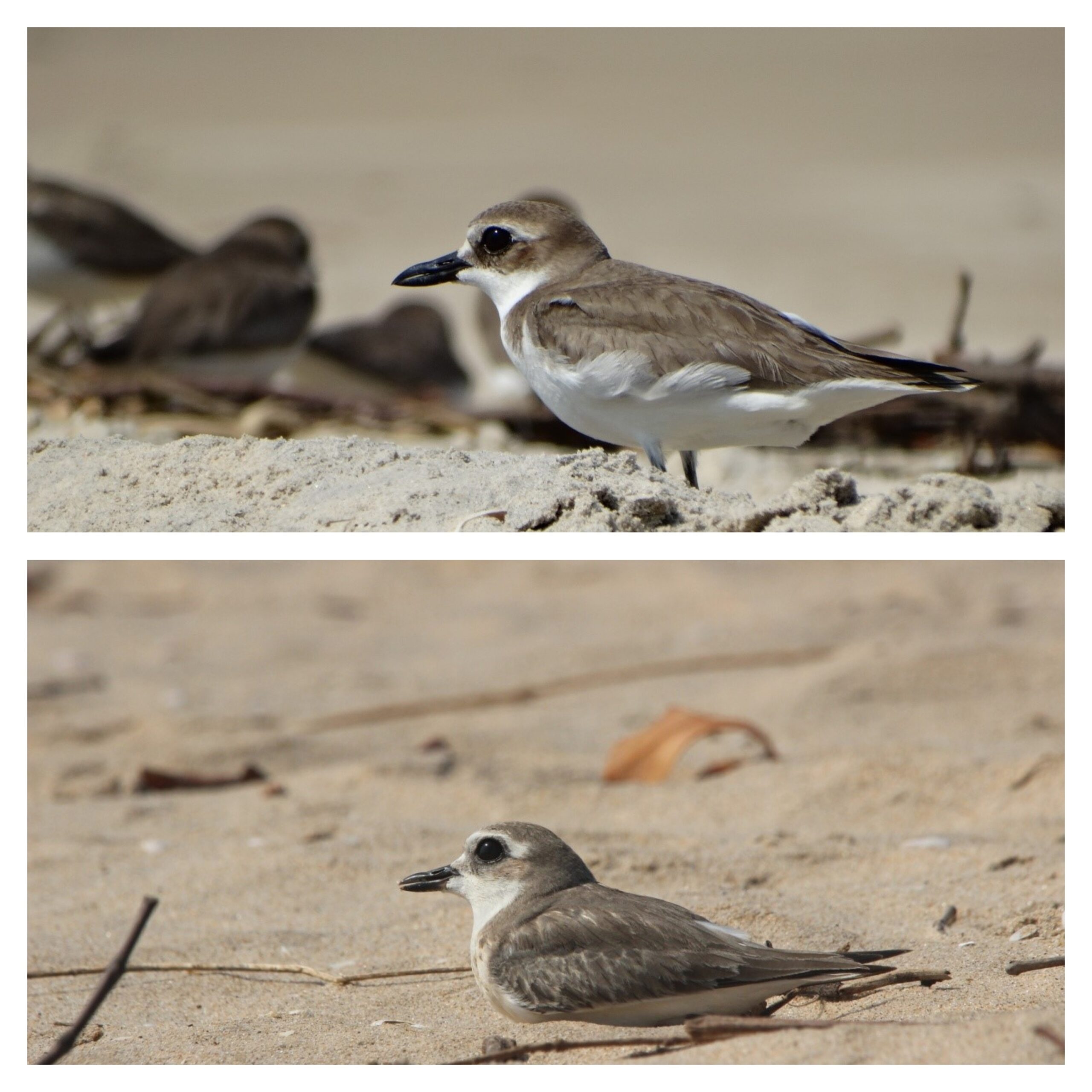 Plovers camouflaged with beach sand. Makes small depressions in the sand and sits in it during high tide
Plovers camouflaged with beach sand. Makes small depressions in the sand and sits in it during high tide
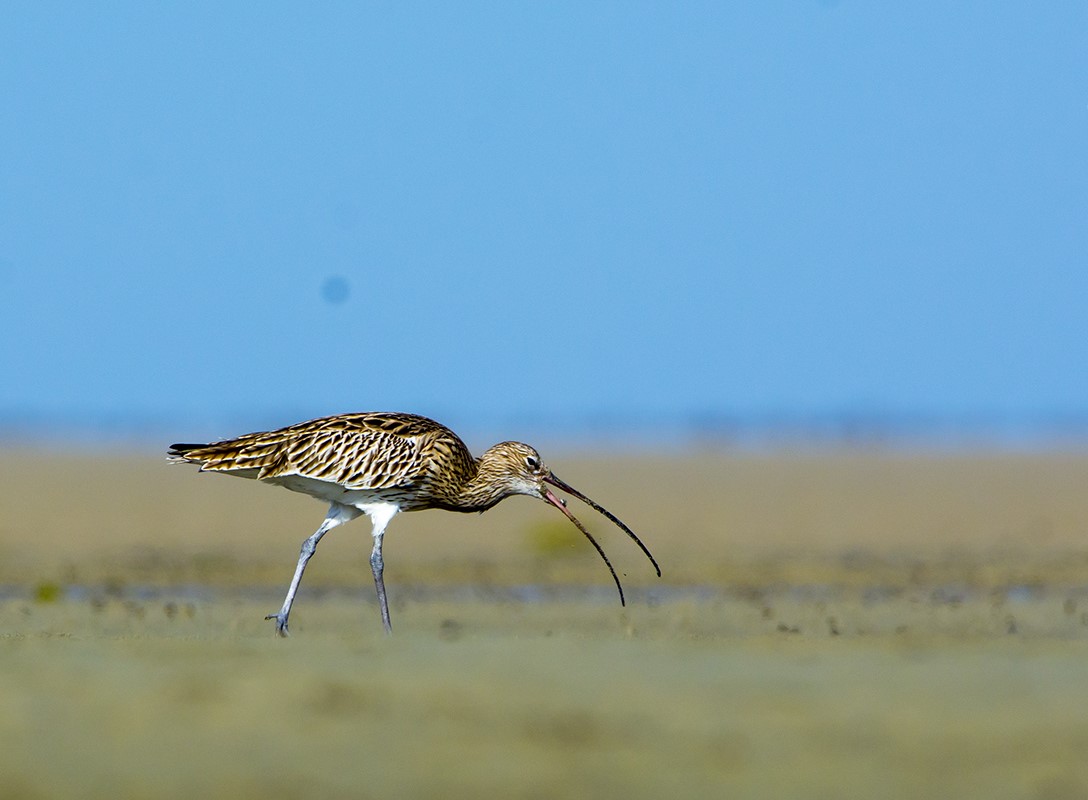 Eurasian Curlew eating gastropod
Eurasian Curlew eating gastropod
I am currently working as a biologist at Nehru Zoological Park, in Hyderabad. As a biologist, one of my key responsibilities involves managing conservation & breeding programmes for two species, such as the Indian Mouse Deer (Moschiola Indica) and the White-rumped Vulture (Gyps Bengalensis). These projects are important because two of these species have substantial threats in the wild and are categorised as schedule-I species under the Indian Wildlife Protection Act 1972. The conservation breeding programme for mouse deer involves rigorous monitoring of species to ensure the maintenance of a healthy and genetically diverse population. This often-overlooked species plays an important role in the ecosystem, and our efforts are aimed at ensuring its future population through careful breeding and effective reintroduction.
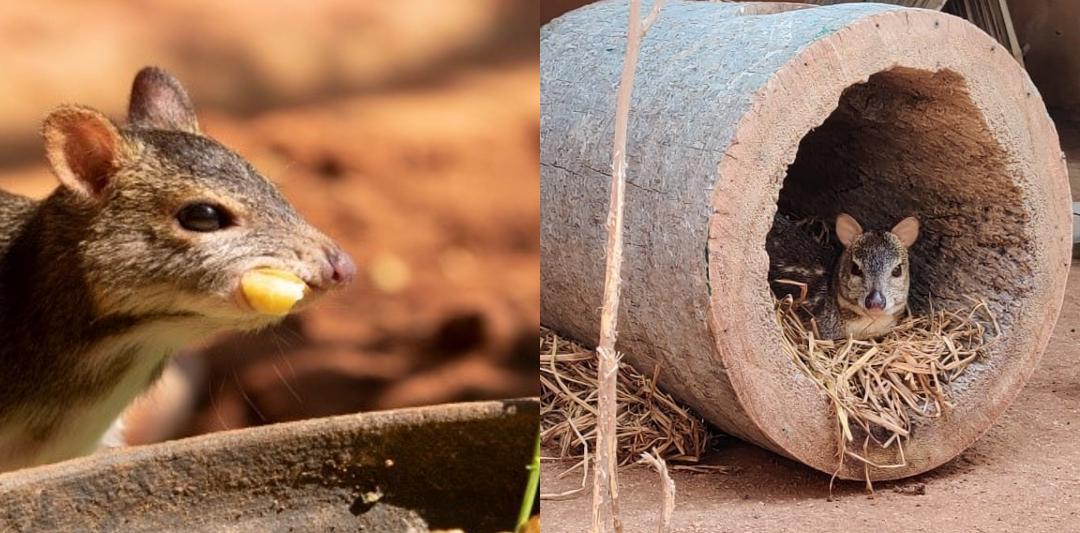 Food and environmental enrichment of Mouse Deer
Food and environmental enrichment of Mouse Deer
The White-rumped Vulture conservation & breeding programme is extremely close to my heart. This exquisite species is rapidly declining due to a range of problems. Our conservation programme is focusing on increasing their numbers in captivity through breeding. Both projects are funded by the Central Zoo Authority of India. In addition to these projects, I am dedicated to the overall welfare of the animals at the zoo. This includes monitoring animal behaviour on a regular basis, implementing enrichment items, conducting health checks, and ensuring that the animals in our care receive a healthy, nutritious diet. Every day brings new challenges and opportunities for learning. This includes working with the veterinary team on animal health issues, working with animal care staff to improve the habitats for the animals, and educating the visitors about wildlife conservation.
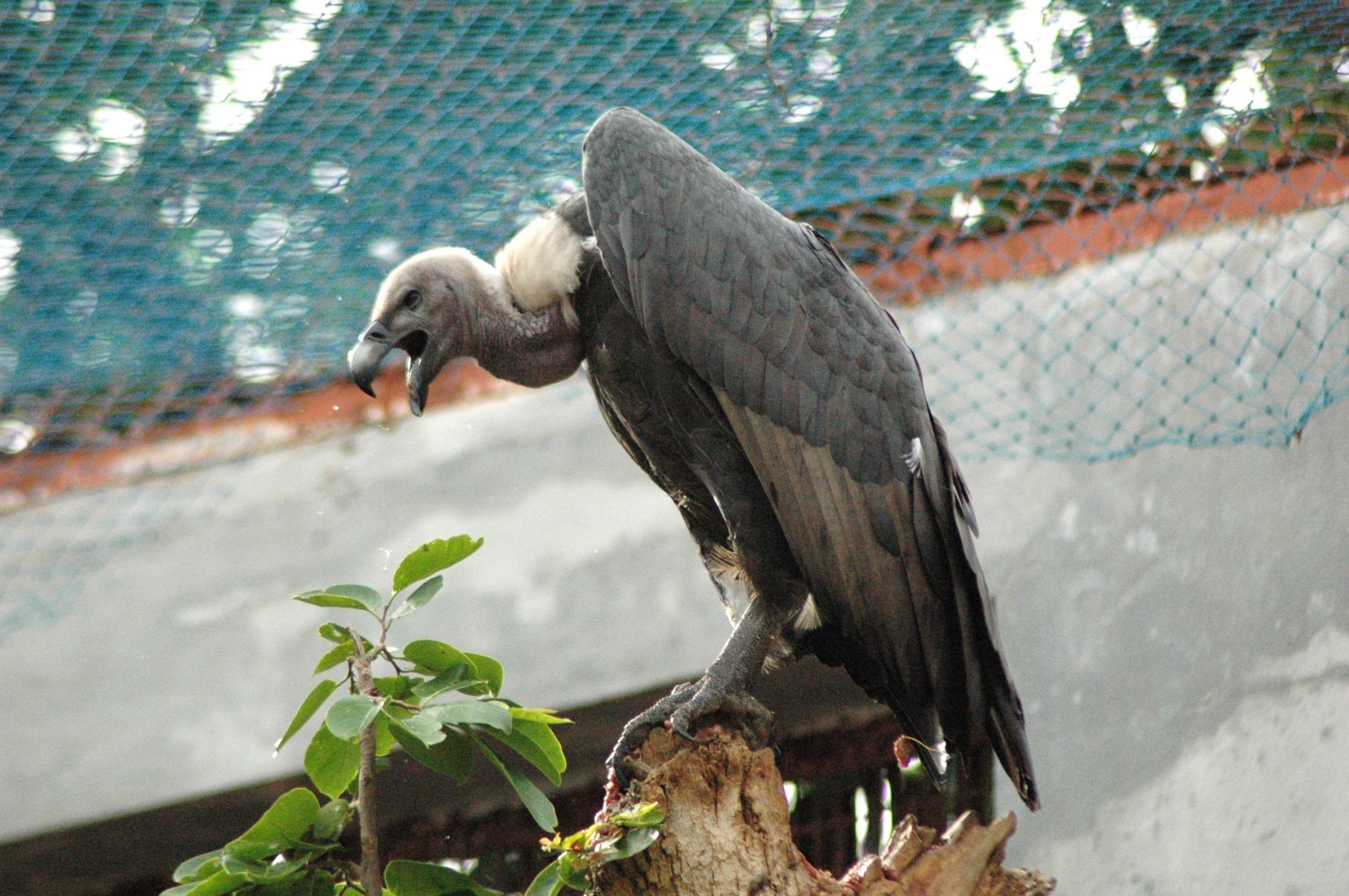 White-rumped Vulture in the Vulture Conservation Breeding Centre (VBC) at Hyderabad Zoo
White-rumped Vulture in the Vulture Conservation Breeding Centre (VBC) at Hyderabad Zoo
I love what I do because…
My interest does not just lie in watching birds. I am interested in understanding the environmental dynamics, especially the effects of climate change. Climate change is an ever-present force that fundamentally alters the community composition of birds. Studying the effects of these changes can provide valuable insights about the wider effects of global environmental change. And I am also interested in assessing the impacts of various development activities on birds and their habitats. Human-induced activities such as urbanisation, infrastructure development, and encroachment of land have threatened wildlife. I thrive on understanding the negative impacts of these developmental activities on the population dynamics of birds, which is essential for developing conservation strategies and sustainable coexistence.
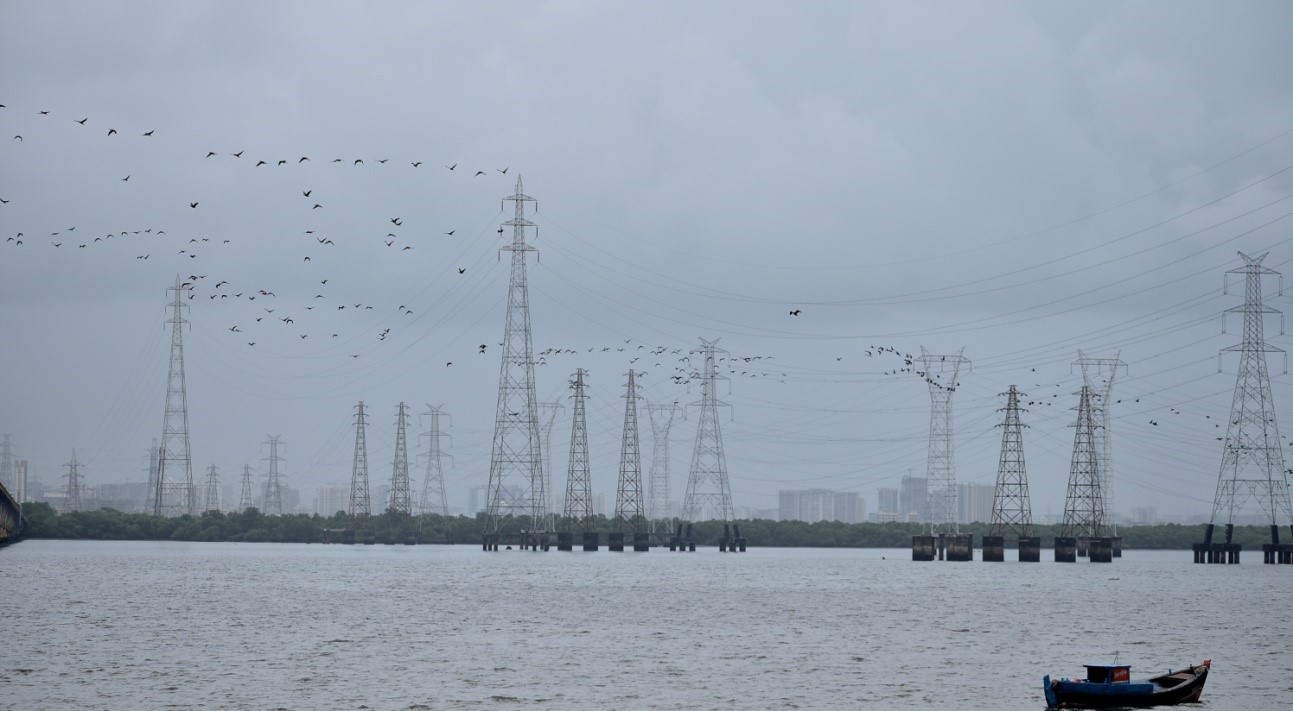 Transmission power lines one of the major threats to the waterbird population
Transmission power lines one of the major threats to the waterbird population
Challenges I have faced..
I have been fortunate to not face too many challenges during my research. However, one of the most challenging aspects of the field is managing people, especially when coordinating with local communities. During my PhD, I faced significant issues while establishing grid plots on an open intertidal mudflat. This involved erecting wooden sticks to demarcate the boundaries of grid plots. However, the local fishermen would frequently remove these sticks, alleging that their nests were frequently entangled with these sticks. This constant interruption threatened to disrupt my research. I realised a need for a solution and decided to contact local fishermen directly. I organised a meeting where I explained the importance of my research and the potential challenges facing shorebirds. I emphasised the potential benefits for both birds and the local community. Fishermen accepted my explanation and began to support my work without any disturbance. This experience really defined the importance of communication and community engagement in the research field. Our mutual understanding and cooperation transformed the potential conflict into a cooperative effort. The help of fishermen not only supported my research but also showed me the importance of communication with locals.
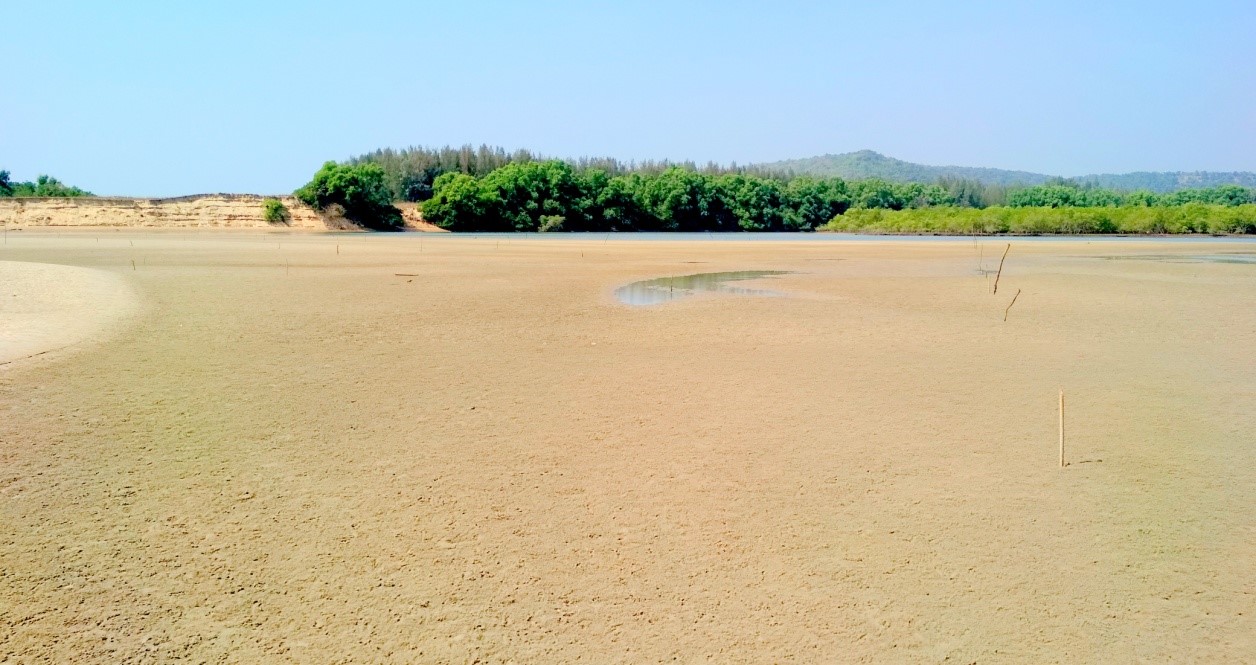 Exposed mudflat with erected wooden sticks
Exposed mudflat with erected wooden sticks
My advice to young researchers is..
- When you decide to take your career path in ecology, networking and working with subject-matter experts can provide valuable insights and potential opportunities in the future.
- Ecology, like most other fields, is in a continuous state of development; new tools and techniques are constantly being developed, and keeping up to date with such developments concerning research methods, field equipment, and data analysis software enhances the quality and efficacy of your work.
- A thorough literature review must be done before starting a research project. Reading the available information can help you identify gaps and plan your research.
- Field work is an integral part of ornithological studies. One needs to be prepared for the loneliness and physical stress arising from long hours of fieldwork. To overcome this, strong resilience and self-motivation are needed. Engaging in your general hobbies during your downtime can provide a mental break and motivation.
- Patience is key in research. Results may not come quickly, and failures are part of the process. Patience and consistency will help you manage the ups and downs of the process.
- To increase your scientific impact, it is always good to publish research articles and present your work at seminars and conferences.
Dr Golusu Babu Rao
[email protected]
Biologist, Nehru Zoological Park, Hyderabad
LinkedIn Profile
Instagram account


Excellent Anna..